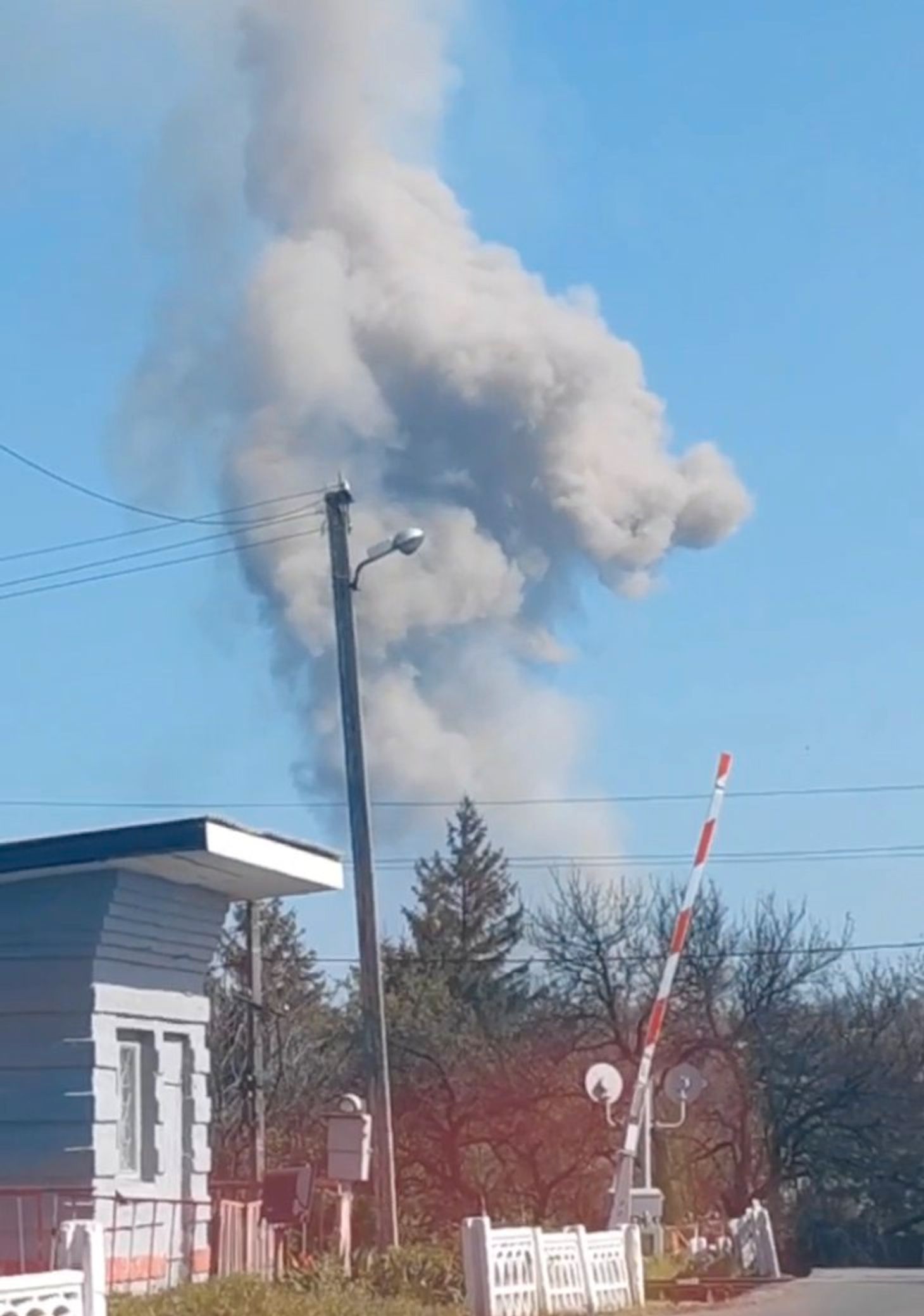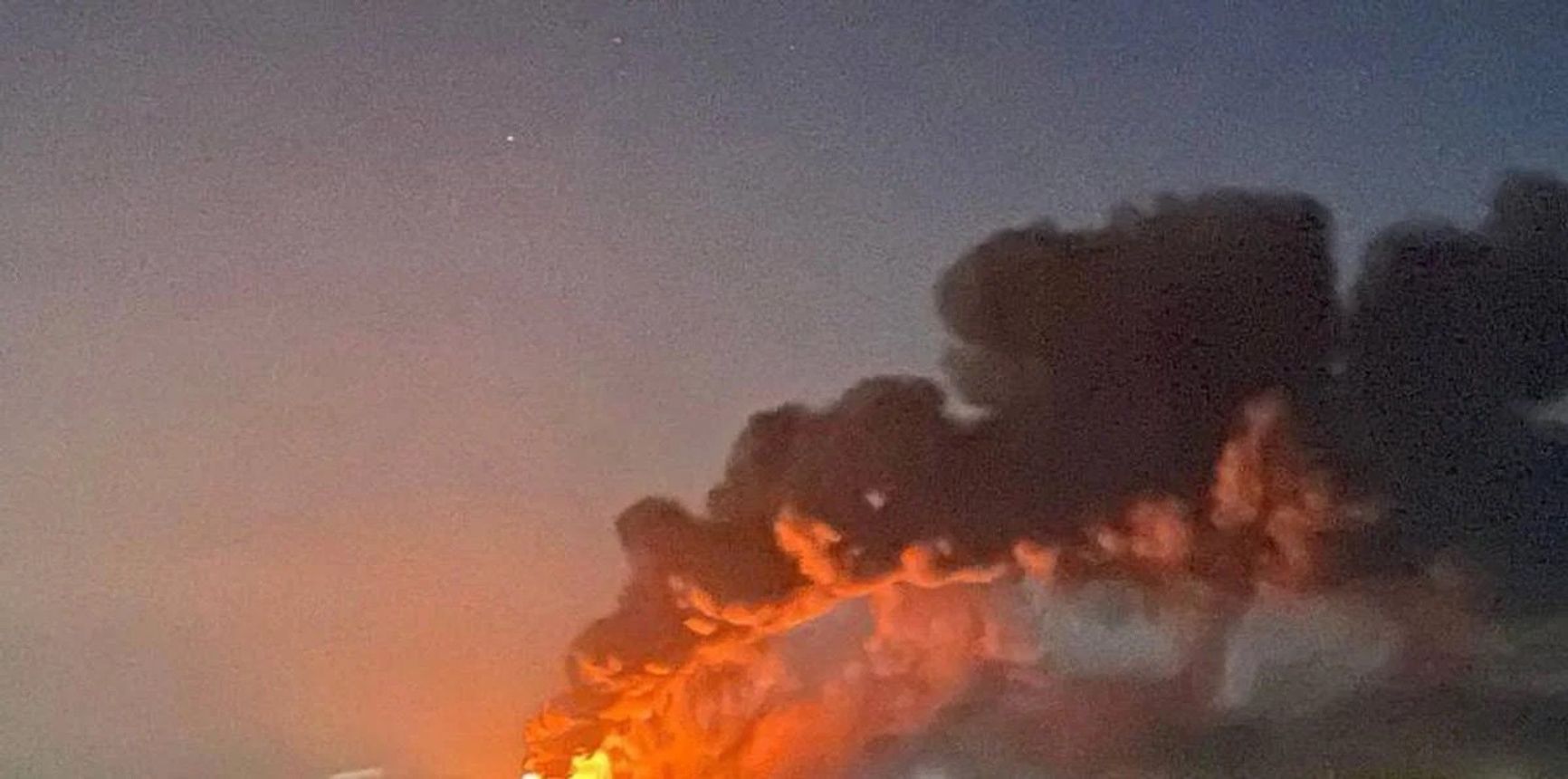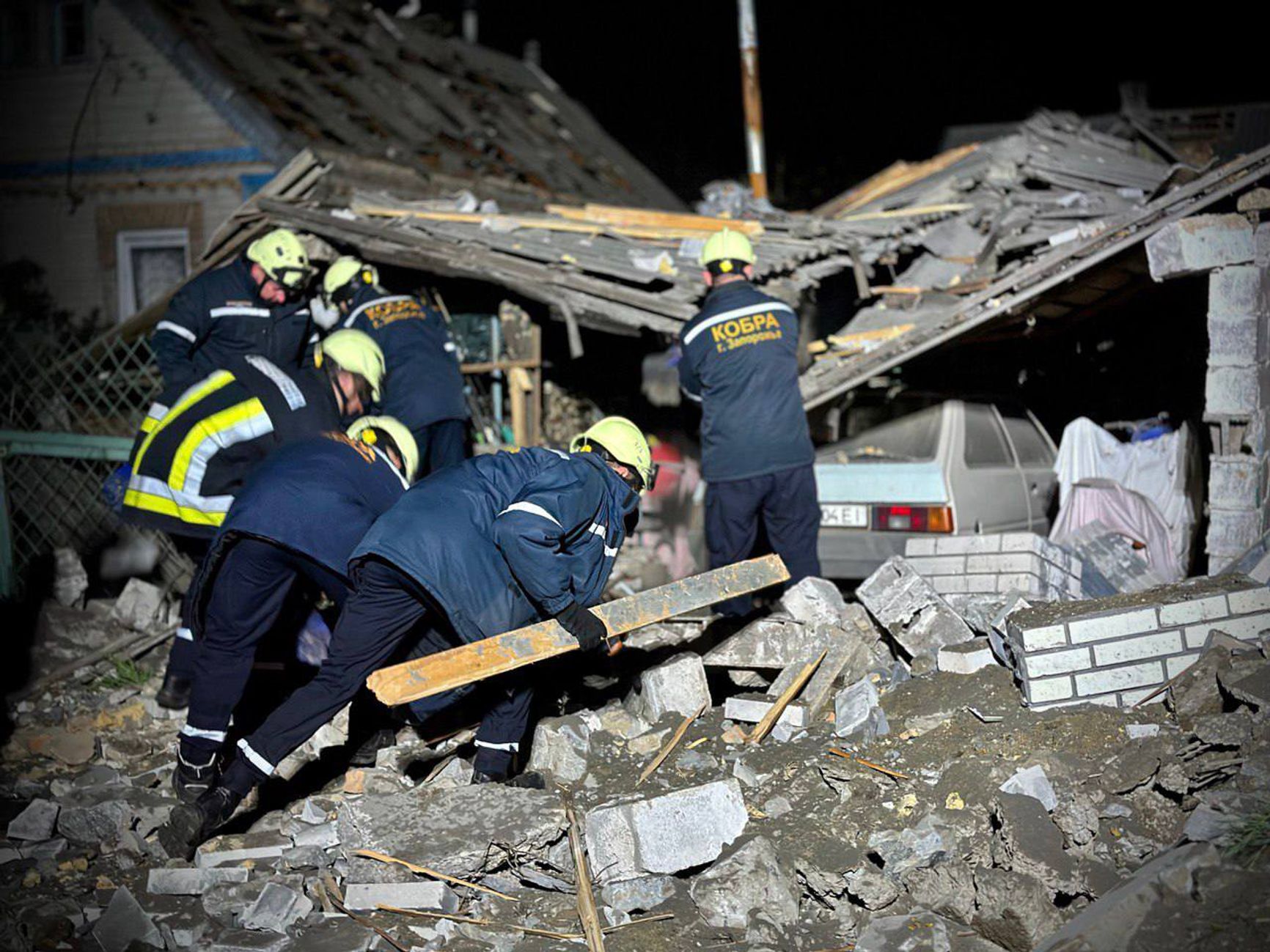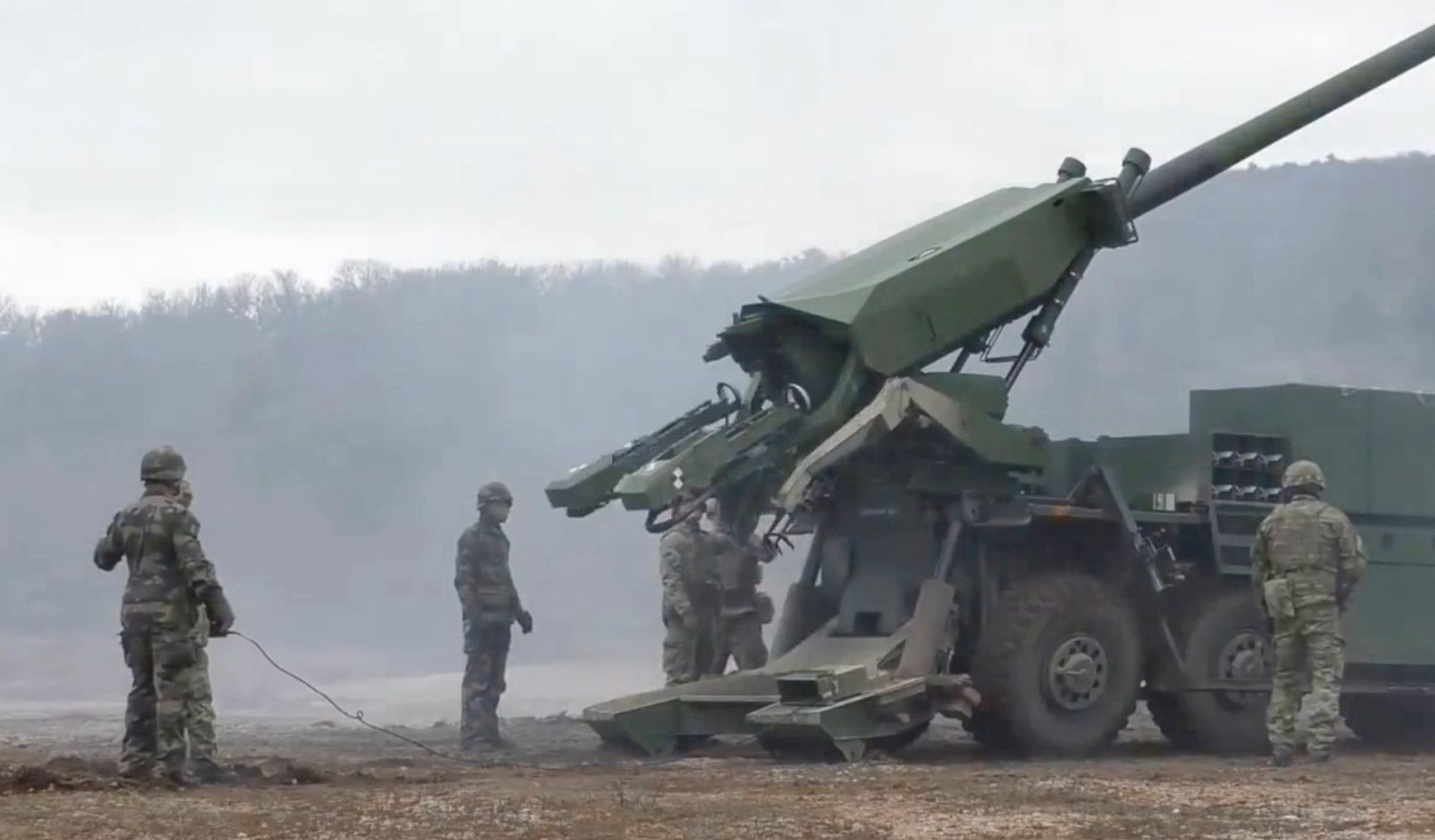
In today's summary:
- In Bakhmut, there have been no significant changes on the line of contact;
- Kyiv has decided to limit access to information related to counteroffensive preparations to avoid new leaks;
- Russian authorities have accused Kyiv of attempting to assassinate Vladimir Putin through a UAV attack on the Kremlin;
- A total of at least six UAV incidents in Russia were recorded overnight and during the day on May 3;
- Russian kamikaze drones struck multiple cities and regions in Ukraine;
- A new military aid package from the US has been announced;
- Iranian shells marked as produced in 2023 have been spotted in the Armed Forces of Ukraine (AFU);
- The European Union (EU) has promised to supply Ukraine with a million artillery shells within a year.
The front line
The US-based Institute for the Study of War (ISW) noted a slight advance of Russian military formations near Bakhmut and attacks near the villages of Bohdanivka (located 6 km northwest of Bakhmut) and Oleksandro-Shultyne (15 km southwest of Bakhmut). The Russians failed to dislodge the Ukrainian army in Bakhmut itself.

A number of sources reported that Ukrainian forces have advanced up to 1.5 km in the Avdiivka direction.
Pro-Russian Telegram channels are spreading information about the AFU allegedly preparing for an operation in Transnistria [an unrecognized breakaway state occupying territory between the Dniester river and the Moldovan-Ukrainian border – The Insider], with the apparent aim of seizing military depots in the settlement of Cobasna. According to the reports, AFU combat groups may advance in the direction of Tiraspol from May 9 to 15 to “carry out an armed provocation,” while other formations will advance to Cobasna “to seize the ammunition warehouses located there.” It should be noted that information regularly circulated in the media about large quantities of usable ammunition at the depots in Cobasna is not true.
A Politico article has claimed that the Ukrainian authorities have decided to restrict access to details related to counteroffensive preparations in order to reduce the risk of information leaks. According to one source, the recent leak of classified US intelligence documents, which indicated the expected date for the start of active combat operations, among other things, left a negative impression on Kyiv. However, a US defense official said there hasn’t been any change and that Washington and Kyiv still have the same level of information-sharing.
Shelling
On the night of May 3, two unmanned aerial vehicles (UAVs, or drones) attempted to attack the Kremlin in Moscow. According to official data, the vehicles were disabled by electronic warfare systems.
The first kamikaze drone was spotted over the Kremlin at 2:27 a.m. Moscow time. It exploded over the Senate Palace, causing a fire on its roof. A second drone strike was detected at 2:43 a.m. Moscow time. Its wreckage fell on the territory of the Kremlin.
Russian authorities called the attack a “planned terrorist act” and “an attempt on the Russian president’s life.” The Kremlin’s press service announced that the Russian side “reserves the right to retaliate when and where it sees fit.”
Representatives of the Ukrainian authorities said that they were not involved in the incident in Moscow. Ukrainian presidential press secretary Serhii Nykyforov commented that Kyiv had no information regarding the night attacks on the Kremlin, and stressed that Ukraine's goal was to only liberate its territories, and not attack another country. For his part, Zelensky's advisor Mikhail Podolyak suggested that “Russia is preparing a large-scale terrorist act” to “justify attacks on [Ukrainian] civilians.” He also stressed that the drones “can be bought in any military store,” in an apparent reference to Vladimir Putin’s 2014 denial of Russian troops being involved in the seizure of Crimea. President Zelensky himself stated that Ukraine “is not attacking Putin or Moscow.”
According to one interpretation of the attack, the outlines of the UAVs caught on video resemble the Ukrainian PD-1 and PD-2 drones. However, the visible physical parameters of the vehicles have led some pro-Russian experts to believe that they were launched from Russian territory.
On the night of May 3 and during the day, several other drone attacks occurred in Russia:
- In the Belgorod region, a Ukrainian drone dropped an explosive device on a defensive fortification construction site. A 46-year-old man was concussed as a result of the explosion;
- In the Bryansk region, a drone dropped an explosive device in the village of Ales, damaging construction equipment;
- In the Bryansk region, near the village of Seshcha, two UAVs exploded on the territory of a military airfield – the base of Russia’s 566th military transport regiment, which is equipped with Il-76 and An-124 aircraft. Reports have claimed that two of the five drones reached the airbase and exploded. A decommissioned An-124 was damaged as a result of the strikes;
- An 40-45 cm long fixed-wing UAV crashed near the town of Kolomna near Moscow. A crater was formed at the site of the crash, with the wreckage of the drone scattered around it;
Finally, a drone struck one of the tanks at an oil depot in the Krasnodar region’s Temryuksky District, located just 7 km from the Crimean bridge and 270 km from the nearest Ukrainian positions.
It is possible that the fire at the airfield in Gostilitsy (Leningrad region) is also related to sabotage. In a separate incident in the Leningrad region, six suspicious items that potentially could be explosive devices were found during an inspection of the area near power lines.
A report by a pro-Russian correspondent claimed that an ammunition depot southeast of Donetsk near the village of Mospyne was hit by missiles fired from the HIMARS MLRS.

For the first time, in its daily briefing, the Russian Defense Ministry reported on the destruction of the US-made JDAM-ER precision-guided air bomb by its air defense forces.
Russian forces attacked targets in the Kyiv, Kharkiv, Dnipro, and Kirovohrad regions with kamikaze drones. According to official data, 21 out of 26 Shahed-type kamikaze drones were shot down. In addition, the Ukrainian Air Force reported the destruction of two Russian Lancet UAVs, one Merlin-BP reconnaissance drone, and one operational-tactical drone. The report also stated that Ukraine’s IRIS-T surface-to-air missile (SAM) division had hit 60 aerial targets since October 2022.
A group of drones flying towards Kyiv was shot down, according to a report from Ukrainian media outlet UNIAN. Seven of eight Shahed drones were shot down near Dnipro, with one drone striking an administrative building in the city. Three Russian drones attacked an oil depot in the Kirovohrad region. No injuries or fatalities resulted from the strike. Russian pro-war channels also reported a kamikaze drone strike in the Donetsk region’s Kostiantynivka.

The Russian Armed Forces fired multiple rockets at a residential area in Zaporizhzhia, completely destroying a private home and severely damaging two other residences.

Kherson and other settlements in the surrounding region were also shelled. Eighteen dead and more than 40 wounded civilians have been reported as a result of the strike. According to a report from the Office of the Ukrainian Prosecutor-General, the Russian military has been engaging in “indiscriminate shelling of civilian infrastructure.” Power engineers who were restoring power supply near the settlements of Muzykivka and Stepanivka also came under fire. Three of them were killed.

Losses
Wagner Group founder Yevgeny Prigozhin continued to voice information about the daily losses of the PMC during the storming of Bakhmut. According to him, at the end of May 2, the mercenaries managed to advance by a distance of up to 160 meters, having lost 103 men.
Arms supplies
The United States intends to transfer artillery ammunition and Hydra 70 missiles to Ukraine as part of a new $300 million military aid package.
A video of one of the French CAESAR 155 mm self-propelled howitzers mounted on the Tatra T815 (8×8) wheeled chassis transferred to the AFU has appeared on social media. Nineteen howitzers were originally intended for Denmark, but the Danish government rejected them in favor of Ukraine.

As noted by the Ukraine Weapons Tracker project, shells of Iranian origin marked as produced in 2023 have been spotted being used by the Ukrainian army. According to the authors of the project, Iranian shells previously used by the AFU were produced in 2022. The pro-Russian Telegram channel Military Informant (“Voenny Osvedomitel”) noted that “the constant appearance of increasingly fresh stocks of shells from Iran produced in recent months is difficult to explain only by the transfer of captured weapons from Iranian naval convoys to the AFU.”
Meanwhile, the EU has reported that it will supply one million artillery shells to Ukraine over the next 12 months.